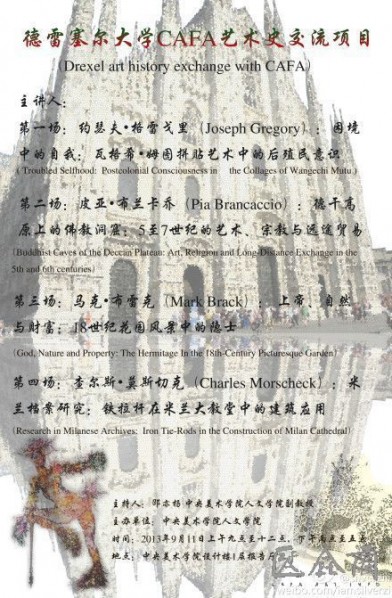
At 9:00 am, on September 11, 2013, Drexel art history exchange with CAFA was held at the Red Chair Lecture Hall on the ground floor of the Design Building, CAFA, and the lecture was hosted by the School of Humanities, CAFA, and was presided over by associate professor Shao Yiyang.
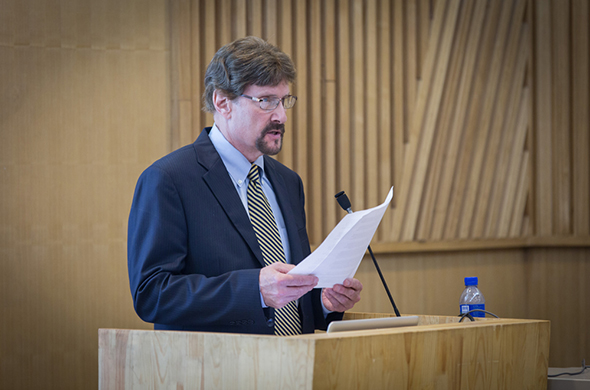
Troubled Selfhood: Postcolonial Consciousness in the Collages of Wangcchi Mutu - Drexel Art History Exchange with CAFA I
The exchange program is divided into four lectures, in the first part, Prof. Joseph Gregory from Drexel University talked about “Troubled Selfhood: Postcolonial Consciousness in the Collages of Wangechi Mutu”. Professor Gregory introduced the creative background, as well as the relationship between creative methods and environment.

Wangechi Mutu is a Kenyan American artist, best known for her works of collage, and her works focus on how to determine self-identity. Mutu uses collage as her creative style, which has two meanings, firstly she is a like a patchwork and combination herself, and subconsciously combines her life experience and art; secondly, the artist initially selected a series of images from mainstream culture, and places them in a new context, to undermine the legitimacy of this image by exaggerating them, turning the Western portrayal of African women into a comic satire, which makes Mutu’s works stand as a strong political frontier and expressive force.
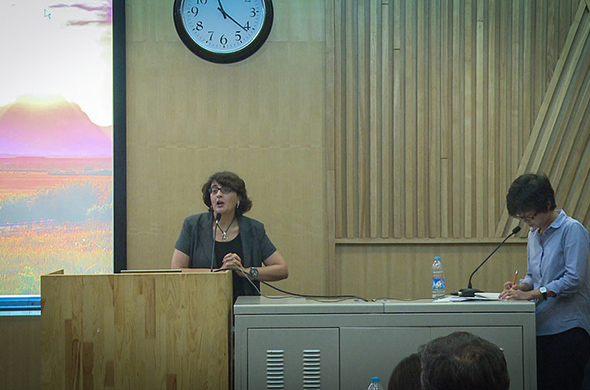
Buddhist Caves of the Deccan Plateau: Art, Religion and Long-Distance Exchange in the 5th and 6th centuries - Drexel Art History Exchange with CAFA II
Following on, the second lecture was entitled “Buddhist Caves of the Deccan Plateau: Art, Religion and Long-Distance Exchange in the 5th and 6th Centuries” by Prof. Pia Brancaccio from Drexel University. The lecture focused on the innovations of architecture and portraiture, appearing in Ajanta Buddhist caves in India in the late 5th and early 6th centuries.

At that time, the Buddhist world had connected with the Western Deccan Plateau, Pakistan and Gandhara region in northern Afghanistan, as well as the regions around the Silk Road, to create a Buddhist propagation path. The Buddhists acted along this route, including both Buddhist monks and secular Buddhists, who promoted Buddhism to spread into these remote areas, to make a further strengthening and innovation in cave art and sculptural art. Such long-distance communication is revealed from the important ruins like Ajanta caves in India, where two important innovations appear, firstly, there was a new type of temple appearing in the Ajanta in the 5th century, secondly, there is a huge Nirvana image found in the Western Deccan cave.
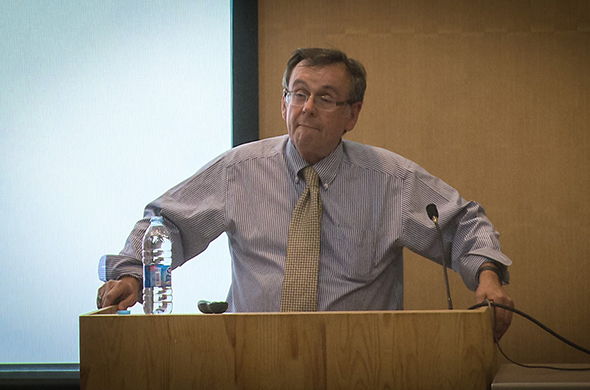
The Hermitage in the 18th –Century Picturesque Garden - Drexel Art History Exchange with CAFA III
At 14: 00, on September 11, 2013, Prof. Mark Brack gave a lecture entitled “God, Nature and Property: The Hermitage In the 18th Century Picturesque Garden”.
18th century picturesque gardens in UK were transformed from a religious perspective, to create a scene similar to heaven, which still affects us today. Among them, there is seclusion architecture, which is made of roots. These hermit dwellings are not detailed in academia yet, blurring the differences between nature and architecture.
Finally, Professor Mark also associated the seclusion of architecture with Chinese culture, emphasizing the imitation of nature. He stressed that it was undeniable that Chinese –style had hugely promoted the Europe style as it was concerned with naturalism, although Britain improved in its sensitivity to gardens with the influence of the Chinese style, it was not the origin of the naturalistic British garden, for the Western world had its own traditions. He concluded, it was a universal idea that people of different cultural backgrounds wanted to be close to nature, and going through different eras and regions, Chinese and European pursuit of the ideal garden had eventually come together.
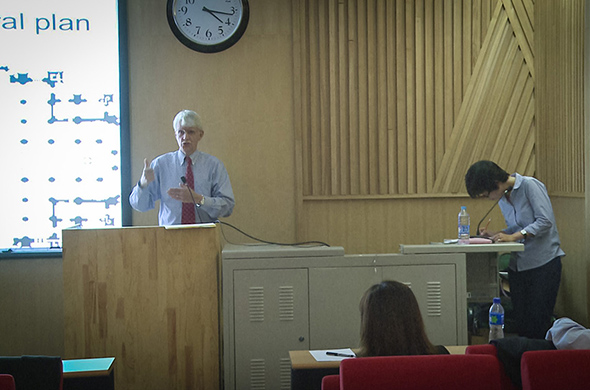
Research in Milanese Archives: Iron Tie-Rods in the Construction of Milan Cathedral - Drexel Art History Exchange with CAFA IV
In the 4th lecture, Prof. Charles Morscheck gave a lecture entitled “Research in the Milanese Archives: Iron Tie-Rods in the Construction of Milan Cathedral”.
It was divided into two parts: firstly the methodology, to brief on the basic situations of National Archives Museum and Archives Museum of Milan Cathedral. Secondly, a study of the use of iron tie-rods in the process of the construction of Milan Cathedral, mainly dependant on the files that have never been published.
In the process of the construction of Milan Cathedral, it was considered a defective expression of Gothic cathedral by the Northern architects. But, seen from the current situation of the Milan Cathedral, iron tie-rods have an obvious advantage, meeting mechanical support, while saving the cost and time to construct flying buttresses, so offering a larger interior space, and achieving good translucent large windows. In short, iron tie-rod is a rather important technological advance, rather than the misunderstanding of the structure of the Gothic cathedral. From which we can also see that the architectural technology of Italian engineers were far beyond the role of the northern architects.
Journalists: Duan Ziying and Li Fan, Photo: Hu Zhiheng/CAFA ART INFO
Translated by Chen Peihua and edited by Sue/CAFA ART INFO




























